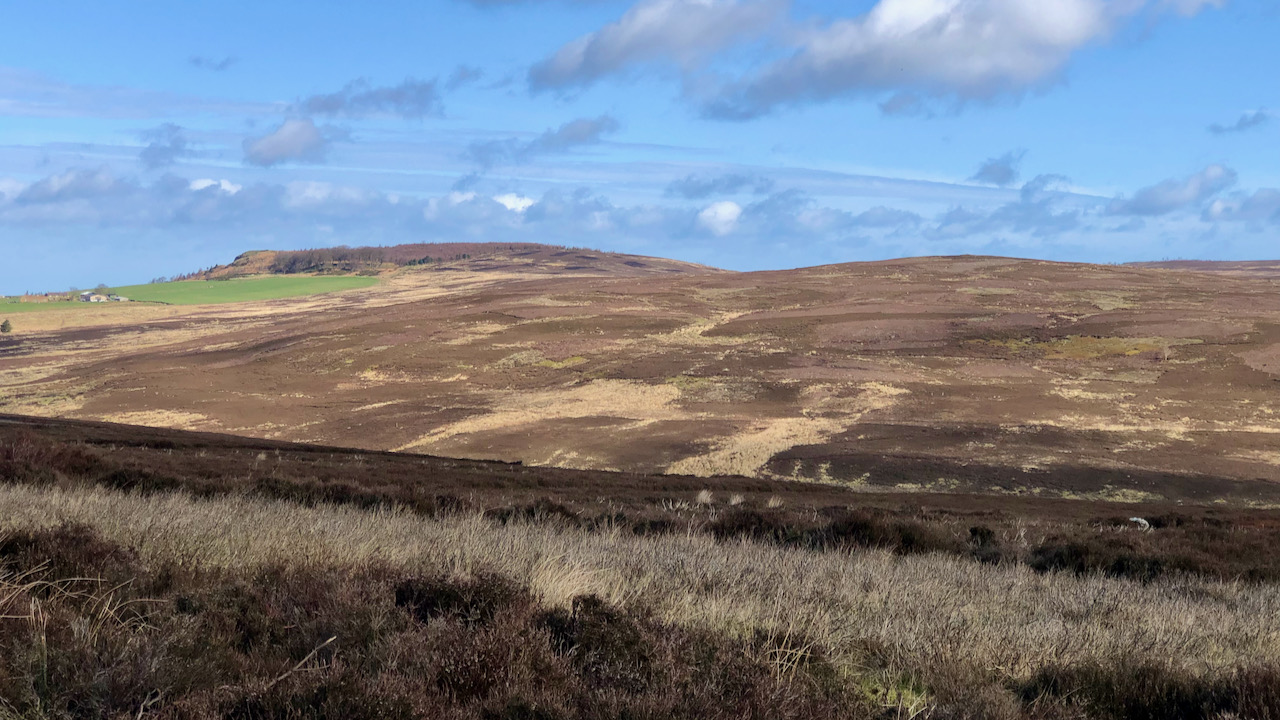I read once that place-names split neatly into two groups: habitative names, describing the kind of settlement in question, and topographic names, painting a picture of the lay of the land — rivers, rocks, marshes, and hills. Among the ancient Celtic place-names that have trickled down to us, habitative names are not easy to find; it’s mostly topographic all the way.
Take Yorkshire, for instance. Its rivers sport names deeply rooted in the Celtic language. Hereabouts, we’ve got the Esk, Derwent, Leven, and the Tame. As for the hills, ‘pen’ is a popular element, signalling a sharp summit, like Pen-y-ghent, while ‘bryn’ suggests a gentler, rounded peak. The closest example of this I can find is Tidy Brown Hill up on Ingleby Moor.
Celtic names hinting at woodland origins are quite common, but they’re no evidence for proving the existence of ancient forests. Over time, words can get mangled through use and have more than one origin. Still, when you stumble upon names hinting at ancient woodland nearby – like ‘wudu’, ‘weald’, ‘hyrst’, and ‘coed’ – it sets the imagination alight. Even ‘leah’, indicating a clearing, implies the presence of nearby woodland.
Now, that word, ‘Coed’, has folks suggesting it might be the root of the name Codhill Heights, the flat high point on the right in today’s featured image1Hudson, Martyn. “on blackamoor”. Page 88. 2020. ISBN 978-1-9164257-9-8.. It’s a stretch to picture a woodland cloak draping this ridge back in the Iron Age.
But there’s another theory in the mix. Some reckon ‘cod’ could trace its lineage back to the Norse word ‘keld’, meaning ‘spring’2Burns, Tom Scott. The Walker’s Guide to the Cleveland Hills. Page 49-50. 1993. Smith Settle.. And wouldn’t you know it, a spring did once bubble forth near the corner of that green field below Highcliff Nab on the left of the photo. It’s even named as Codhill Spring on the Victorian O.S. map.
That map also names what’s now Highcliffe Farm as ‘Cod Hill’, hinting that the name might’ve stretched to cover the whole area of what’s now the farm. And in a lease dating back to Henry VIII’s day, there’s mention of a close of land known as Coddale, which some suggest is a precursor of Cod Hill3“Guisborough Before 1900”. Edited by B.J.D. Harrison and G. Dixon. Page 71. 1982. ISBN 0 9507827 0 X.. In my imagintion, I see it pronounced as ‘Coddle’ in the Cleveland dialect, which the southern Victorian surveyor could have misheard as ‘Cod Hill’.
So, whether it’s ‘coed’ or ‘keld’, it’s all academic. Maybe Codhill Heights never wore a woodland crown after all.
- 1Hudson, Martyn. “on blackamoor”. Page 88. 2020. ISBN 978-1-9164257-9-8.
- 2Burns, Tom Scott. The Walker’s Guide to the Cleveland Hills. Page 49-50. 1993. Smith Settle.
- 3“Guisborough Before 1900”. Edited by B.J.D. Harrison and G. Dixon. Page 71. 1982. ISBN 0 9507827 0 X.

Leave a Reply